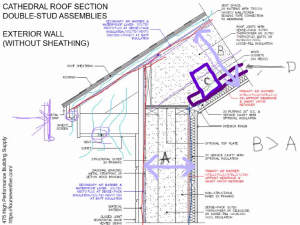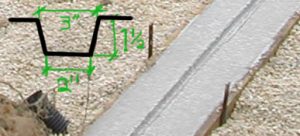Question:
What is the building’s height that we are currently making the plans and elevations for?
Solution:
Utilized the elevation drawings of maison Gartte-Cie case study project on OpenLab. You know the long East-West dimension (55’) from the dimension diagram. Use that information to scale the elevation drawings. You are encouraged to do more research on the case study building including it’s dimensions, consider searching for more drawings and evaluating building pictures.






